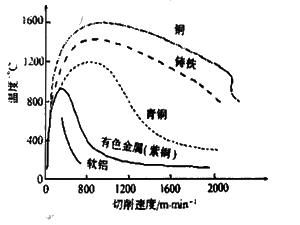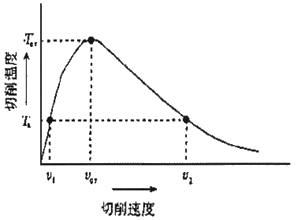Productivity and cutting speed are closely related. The increase in cutting speed can increase productivity, and the development of precision and ultra-precision machining technology has further improved the cutting speed. After the concept of high-speed machining was proposed, it was widely used in industrial production in the near future after long-term exploration, research and development. Today, the cutting speed has reached 3000m/min when machining steel parts, 3000m/min when machining cast iron, and 7000m/min when processing aluminum alloy, which is many times higher than the commonly used cutting speed. In addition to high-speed cutting, high-speed grinding technology has also entered the practical stage. The conventional grinding speed is 30 to 40 m/s, and the speed of ultra-high speed grinding has reached 150 m/s or more. In addition to greatly increasing productivity, high-speed cutting and grinding can also improve the quality of the work, especially the quality of the finished surface. High-speed cutting refers to cutting at a speed much higher than the conventional cutting speed. At present, there is no uniform definition of the speed range of high-speed cutting in various countries, and sometimes it is also called Ultra-High Speed ​​Machining. Cutting, which is 5 to 10 times higher than the conventional cutting speed, is usually referred to as high speed cutting. The relationship between conventional cutting speed and tool life is assumed to be linear, ie the higher the speed of the tool, the faster the tool wears. In the first half of the 20th century, some researchers began to discover that in some processes, after the cutting speed reached a certain value, the situation began to change, the tool wear increased, but the speed continued to rise, beyond this threshold, it can return to normal. machining. After long-term production practices, it has been recognized that for a particular material being processed, there may be a very desirable cutting condition in areas that are many times higher than the current cutting speed, under which the productivity is high. The tool has a long durability and a low cutting force.    Figure 1 Salomon cutting speed and temperature test curve      Figure 2 Salomon cutting speed and temperature model Dr. Carl Salomon, a cutting physicist in Germany, conducted an ultra-high-speed simulation test in 1929. In April 1931, he published the famous ultra-high-speed cutting theory and proposed the high-speed cutting hypothesis. As shown in Figure 1, Salomon believes that the cutting temperature increases with increasing cutting speed over the range of conventional cutting speeds. When the cutting speed is increased beyond a speed range, the cutting temperature is decreased as the cutting speed is increased, and the cutting force is also greatly reduced. According to his assumption, cutting in a high-speed zone with a certain speed will result in a lower cutting temperature and a smaller cutting force. This is the famous Dead Volley of cutting temperature under high-speed cutting conditions, as shown in Figure 2. But the curve predicted by this model is still not confirmed by accurate and convincing experiments. H. Schulz et al. believe that the experimental curve according to Carl Salomon is the relationship between the tool temperature during milling (rather than the temperature of the cutting shear zone) and the cutting speed. The reduction in tool temperature on the high speed section is the result of the shorter contact time between the tool and the workpiece. From the perspective of cutting mechanism research, temperature changes and material deformation conditions in the cutting shear zone should be investigated. The reduction of cutting force in high-speed cutting is the physical basis for the development of high-speed cutting technology applications. For the reason why the speed is high to a certain extent, the cutting force will be reduced. Some people think that it is due to the softening of the workpiece material. This softening can be understood as an increase in the cutting speed, an increase in the temperature of the cutting shear zone, and a decrease in the yield limit of the material. Some researchers believe that the energy required for cutting reaches an equilibrium point within a certain speed range. As the cutting speed is further increased, the cutting force decreases, and remains unchanged after a certain speed, and then may follow the momentum of the chip. The change has changed slightly. However, these inferences cannot be accurately explained from the mechanism of material deformation. Therefore, further research should investigate whether the energy required to produce material deformation during cutting varies with the material deformation speed. Whether the deformation speed (rheological velocity) exceeds a certain limit value changes the material deformation mode, so that the energy required for deformation decreased. Determining this limit and finding the optimum cutting speed is of great engineering significance. How to define high speed cutting? The current general definition is that 5 to 10 times the cutting speed of conventional cutting is called high speed cutting. The author believes that under the premise of the establishment of Salomon theory, the cutting state when the cutting speed of a particular material reaches the limit speed should be called high-speed cutting. The high-speed cutting is not only divided by speed, but closely related to the physical and mechanical properties of the material and the cutting state. Related. Flowing Agent,Powder Coating Hardener,Matting Agent Tianyi Chemical Engineering Material Co., Ltd. , http://www.gdchemicalmaterial.com
